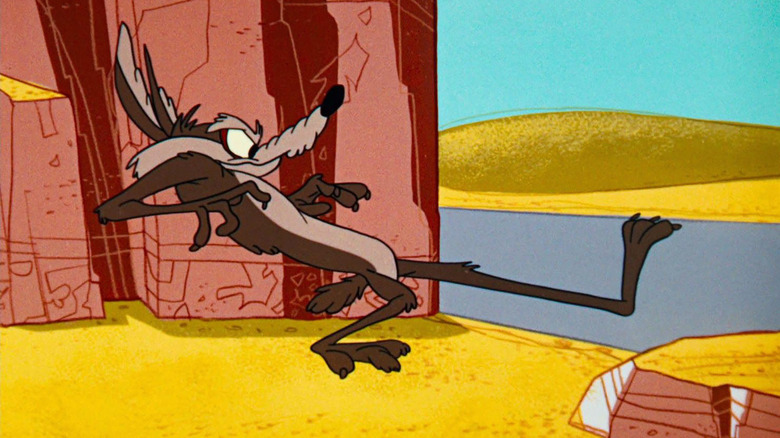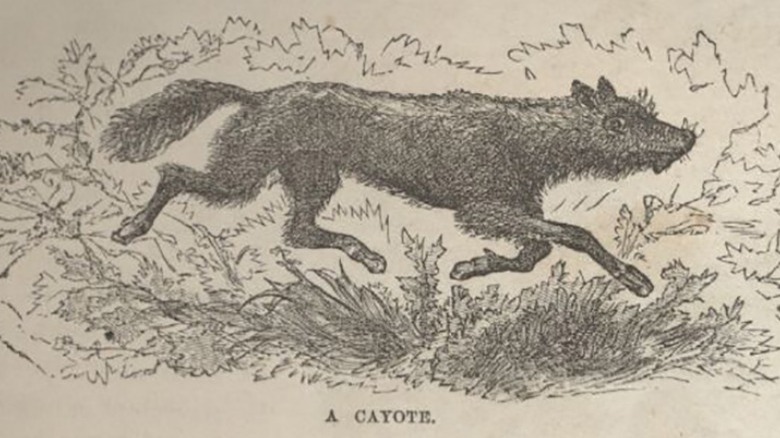Why You Can Thank Mark Twain For Your Favorite Looney Tunes
The forever-thwarted Wile E. Coyote and his prey, the Road Runner, are two of the most-beloved members of the "Looney Tunes" line-up. Over the decades, the clever canine routinely gets outsmarted and outpaced by his meal on long, speedy legs. But where did this classic rivalry begin?
In an interview with the Research Library at Animation Art Conservation in 1996, the cartoon's creator Chuck Jones explained that he was inspired to create Wile E. Coyote after reading a book by Mark Twain. The classic American author of "The Adventures of Huckleberry Finn" described the funny little canines in his 1872 book, "Roughing It," which documented Twain's experiences traveling through the Wild West during the Nevada silver rush. Twain's drawings and description of the animal created such a strong impression in Jones that he created one of animations' most memorable characters.
'A living, breathing allegory of Want.'
Jones explains that what fascinated him so much was Twain's anthropomorphization of the coyote, who he described with very human characteristics. Apparently Jones was an avid reader from the time he was very young, and reading "Roughing It" left a life-long impression:
"I found the Coyote in the fourth chapter of 'Roughing It,' which is a journal he wrote about traveling by stagecoach to Carson City, Nevada. During that period, he kept hold of the things he'd seen and among them were things like tarantulas, and so on. Twain opens that chapter with a description of the coyote, which is about as accurate as anybody has ever described one. He, also, humanized him. And that was kinda news to me. I hadn't run into anything where I felt that a coyote was like a human being."
Coyotes are frequent figures in folklore, in part because of their expressive faces and coy behavior. Coyotes are small wild dogs with big personalities, and Twain's manner of turning the coyote into a relatable comedic character was the foundation for the "Looney Tunes" predator.
In "Roughing It," Twain's description of the coyote, or as he spells it, the "cayote," isn't exactly a pleasant one. He describes the prairie scavenger like some kind of nightmare creature, though his drawings are significantly more charming:
"The cayote is a long, slim, sick and sorry-looking skeleton, with a gray wolf-skin stretched over it, a tolerably bushy tail that forever sags down with a despairing expression of forsakenness and misery, a furtive and evil eye, and a long, sharp face, with slightly lifted lip and exposed teeth. He has a general slinking expression all over. The cayote is a living, breathing allegory of Want. He is always hungry.
He is always poor, out of luck and friendless. The meanest creatures despise him, and even the fleas would desert him for a velocipede. He is so spiritless and cowardly that even while his exposed teeth are pretending a threat, the rest of his face is apologizing for it. And he is so homely!—so scrawny, and ribby, and coarse-haired, and pitiful."
The wily coyote will be on the big screen again soon when "Coyote vs. Acme" hits theaters on July 21, 2023.

